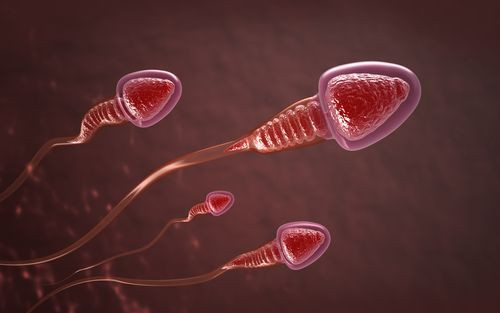What Causes Male Infertility? Sperm Cells With Poorly Packaged Genes, Researchers Say

The human genome would span nearly six feet if unfurled, yet every cell in your body contains a complete copy. How does that work? The DNA wraps itself like thread around protein spools called histones, and these genes and proteins combined form a complex referred to as a chromatin. Yet sperm (a man’s reproductive cells) are much smaller than most cells, so early in their development, the histone spools are replaced by even tinier proteins called protamines. Now, researchers from Cold Spring Harbor Laboratory (CSHL) discovered that this moment of substitution — referred to as chromatin remodeling — is essential for male fertility, and when this process somehow goes awry, the result is infertility.
Male Infertility
When people think of fertility, they most often think of women, yet men play an equal role in fertility and may be the cause of childlessness. In fact, more than three million American men also experience infertility. Male infertility can be a temporary issue caused by a reaction to certain conditions, say, a sexually transmitted disease or even a tumor. On the other hand, infertility may be a permanent condition caused by a fundamental issue with the sperm itself, including too few sperm produced, misshapen sperm, motility (when sperm that cannot swim properly), or blockages that prevent sperm from joining with semen.
To better understand infertility, then, scientists commonly investigate sperm, the specialized cell that is so small — 30 times more petite than the female egg — it contains little more than DNA and molecular motors. From head to tail, a sperm cell is invisible to the naked eye, just about 1/500th of an inch. For this reason, even more than other cells, DNA must be tightly packaged to fit within its miniscule boundaries.
CSHL Professor Dr. Alea Mills and Dr. Wangzhi Li, lead author of a new study published Tuesday in Nature Communications, identified a role played in male infertility by Chd5, the protein that regulates chromatin remodeling, the moment when protamines replace histones. The team discovered Chd5 as a potential cause of sterility when they analyzed data from testes biopsies obtained from men with sperm defects causing infertility. "We found that men with more severe defects had the lowest levels of Chd5," Mills said.
To learn more about Chd5, the team of researchers removed copies of the Chd5 gene from male mice. They discovered this resulted in the male mice having severe fertility defects, ranging from low sperm counts to decreased motility. In fact, when the researchers performed in vitro fertilization (IVF), the defective sperm from these mice were unable to fertilize eggs.
Exploring further, the researchers discovered that when Chd5 is missing, chromatin remodeling is entirely disrupted. Protamines do not efficiently replace histones, resulting in a less condensed genome. In turn, when the genome was not packaged correctly within sperm cells, the DNA itself dramatically changed — the double helix became damaged and broke at multiple points throughout the genome.
"So in addition to infertility, loss of Chd5 may put future generations — the rare embryos that do get fertilized with defective sperm — at risk for disease," Mills said. "Chd5 may protect a person from medical conditions related to DNA damage and spontaneous mutations, like cancer and autism." The team of researchers is continuing to explore the effects of Chd5 in human fertility.
Source: Li W, Wu J, Kim S-Y, et al. Chd5 orchestrates chromatin remodeling during sperm development. Nature Communications. 2014.



























